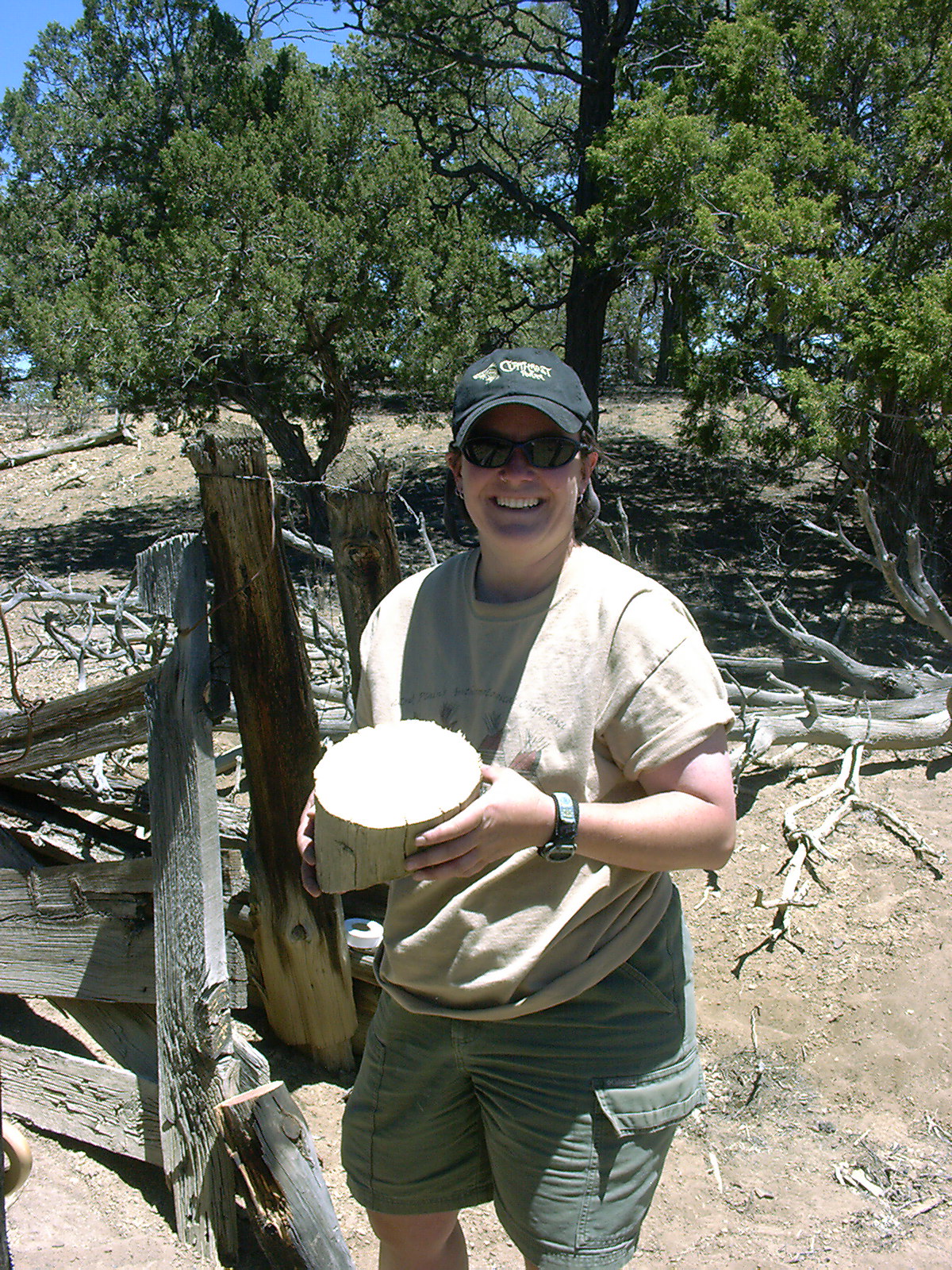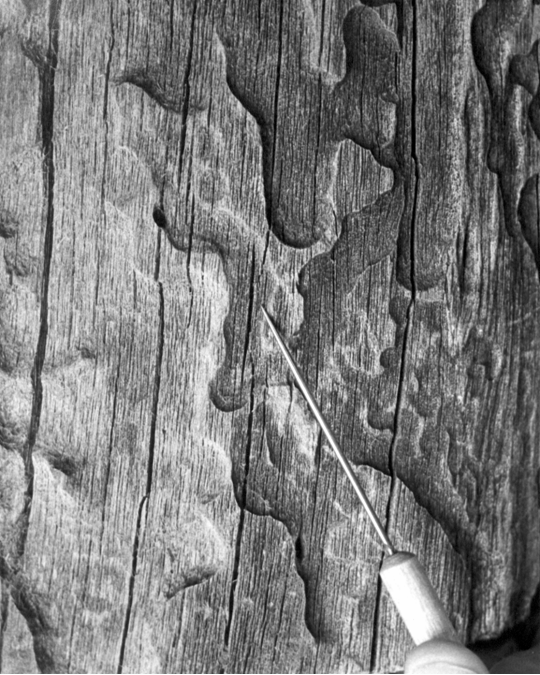 |
 |
|
Dendroarchaeology
The use of tree-ring data to address archaeological issues, primarily with three different types of data:
Behavioral– interpreting the wood-use behaviors associated with how people viewed wood as a resource, and how they selected, procured, and modified timbers for specific architectural and nonarchitectural uses.
Environmental– the use of environmental information inherent in tree rings to inform us about past environmental conditions.
Collecting Samples
- Archaeological tree-ring samples are collected using a specially adapted drill bit that removes ½” cylinders of wood (cores).
- The resulting core holes are filled with corks and labeled with the sample number to provide a field record of the sampling.
- The exact provenience of each sample is recorded as are the attributes of each beam.
- The labeled cores at then taken to the Lab where they are surfaced and crossdated.
- Using a specially adapted drill bit, we extract ½ inch wood cores from beams that exhibits a true outside (with bark, beetle galleries, patina).
To obtain samples from all appropriate beams at site
To record the precise provenience of each beam and sample
To describe the attributes of each beam
To generate chronological and behavioral interpretations of the site
Cutting dates (B, G, L, v- dates)
Last year of tree growth before death.
Bark, bark patina, or beetle galleries must be present.
Seasonality in Cutting dates
Latewood is complete (“comp”- dates). Tree was felled after growing season.
Last ring growth is incomplete (“inc”-dates). Tree was felled during growing season.
Noncutting dates (“vv” and “++” dates)
“++”-dates: possible absent rings near outside of ring growth. Probably deadwood use.
“vv” dates indicate probable erosion of outer rings from a sample.
Anomalous” tree-ring dates
Those dates that don’t “fit” with the other beams from a structure/room, etc. Most likely caused by the reuse of timber, the use of dead wood, stockpiling, repair/remodeling, or other human behaviors.
Sampling Techniques
Two methods were used to collect dendroarchaeological samples from the sites: coring and cross sectioning <Figs coring, fig sawing>. Core samples (1/2” diameter) were collected <Figure 7 - ? > using a specially adapted drill bit similar to an elongated hole saw. Samples were extracted from areas exhibiting characteristics of a “true outside” (beetle galleries, bark, etc.) and the core holes were filled with corks labeled by field sample number. Full or partial sections were hand sawn from beam ends only when sawing did not impact the architectural or visual integrity of the structure. All samples were provenienced on existing site maps and/or photographs; in addition, beam and sample attributes were documented on specially designed LTRR sample forms.
After collection, samples were transported to the LTRR in Tucson where they were prepared and analyzed by Geos 497j/597j students and LTRR staff. Preparation typically involved sanding the sample surface with fine-grit sandpaper (80-400 grit) until the individual cells in each ring were visible under a binocular microscope at 10-40x magnification <figure 8- CHC-25>. Analysis was conducted using the Douglass Method of skeleton plotting (Stokes and Smiley 1968) which assigns a specific year to each and every ring on a sample. <figure 9 - Marcy coring fencepost>
Types of Dates
Cutting dates—denoted by symbols B (bark), G (galleries), L (patina), and v (variable)– that indicate the year of tree death.
Near Cutting dates—denoted by +G, +B, +L, +v—that are within a year or two of tree death dates.
Noncutting dates–denoted by vv (very variable) and ++ (a ring count)– that indicate missing exterior rings, a long ring count, or both.
Return to Top Return to Dendrochronology Fieldschool Webpage Return to LTRR homepage